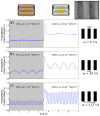Hardware architecture and cutting-edge assembly process of a tiny curved compound eye
- PMID: 25407908
- PMCID: PMC4279557
- DOI: 10.3390/s141121702
Hardware architecture and cutting-edge assembly process of a tiny curved compound eye
Abstract
The demand for bendable sensors increases constantly in the challenging field of soft and micro-scale robotics. We present here, in more detail, the flexible, functional, insect-inspired curved artificial compound eye (CurvACE) that was previously introduced in the Proceedings of the National Academy of Sciences (PNAS, 2013). This cylindrically-bent sensor with a large panoramic field-of-view of 180° × 60° composed of 630 artificial ommatidia weighs only 1.75 g, is extremely compact and power-lean (0.9 W), while it achieves unique visual motion sensing performance (1950 frames per second) in a five-decade range of illuminance. In particular, this paper details the innovative Very Large Scale Integration (VLSI) sensing layout, the accurate assembly fabrication process, the innovative, new fast read-out interface, as well as the auto-adaptive dynamic response of the CurvACE sensor. Starting from photodetectors and microoptics on wafer substrates and flexible printed circuit board, the complete assembly of CurvACE was performed in a planar configuration, ensuring high alignment accuracy and compatibility with state-of-the art assembling processes. The characteristics of the photodetector of one artificial ommatidium have been assessed in terms of their dynamic response to light steps. We also characterized the local auto-adaptability of CurvACE photodetectors in response to large illuminance changes: this feature will certainly be of great interest for future applications in real indoor and outdoor environments.
Figures















References
-
- Land M.F., Nilsson D.E. Animal Eyes. Oxford University Press; Oxford, UK: 2012.
-
- Brückner A., Duparré J., Bräuer A., Tünnermann A. Artificial compound eye applying hyperacuity. Opt. Express. 2006;14:12076–12084. - PubMed
-
- Jeong K.H., Kim J., Lee L.P. Biologically Inspired Artificial Compound Eyes. Science. 2006;312:557–561. - PubMed
Publication types
MeSH terms
LinkOut - more resources
Full Text Sources
Other Literature Sources

